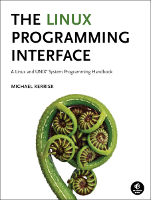Function list (Bold in this list means a function is not static)
/* psem_timedwait.c
Decrease the value of a POSIX named semaphore using sem_timedwait().
Usage: psem_timedwait sem-name nsecs
On Linux, named semaphores are supported with kernel 2.6 or later, and
a glibc that provides the NPTL threading implementation.
*/
#define _POSIX_C_SOURCE 199309
#include <semaphore.h>
#include <time.h>
#include "tlpi_hdr.h"
int
main(int argc, char *argv[])
{
if (argc != 3 || strcmp(argv[1], "--help") == 0)
usageErr("%s sem-name num-secs\n", argv[0]);
sem_t *sem = sem_open(argv[1], 0);
if (sem == SEM_FAILED)
errExit("sem_open");
/* sem_timedwait() expects an absolute time in its second argument.
So we take the number of (relative) seconds specified on the
command line, and add it to the current system time. */
struct timespec ts;
if (clock_gettime(CLOCK_REALTIME, &ts) == -1)
errExit("clock_gettime-CLOCK_REALTIME");
ts.tv_sec += atoi(argv[2]);
if (sem_timedwait(sem, &ts) == -1)
errExit("sem_timedwait");
printf("%ld sem_wait() succeeded\n", (long) getpid());
exit(EXIT_SUCCESS);
}
Download psem/psem_timedwait.c
Note that, in most cases,
the programs rendered in these
web pages are not free standing:
you'll typically also need a few other source files
(mostly in the lib/
subdirectory) as well.
Generally, it's easier to just
download the entire
source tarball
and build the programs with make(1).
By hovering your mouse over the various hyperlinked
include files and function calls above,
you can see which other source files
this file depends on.

